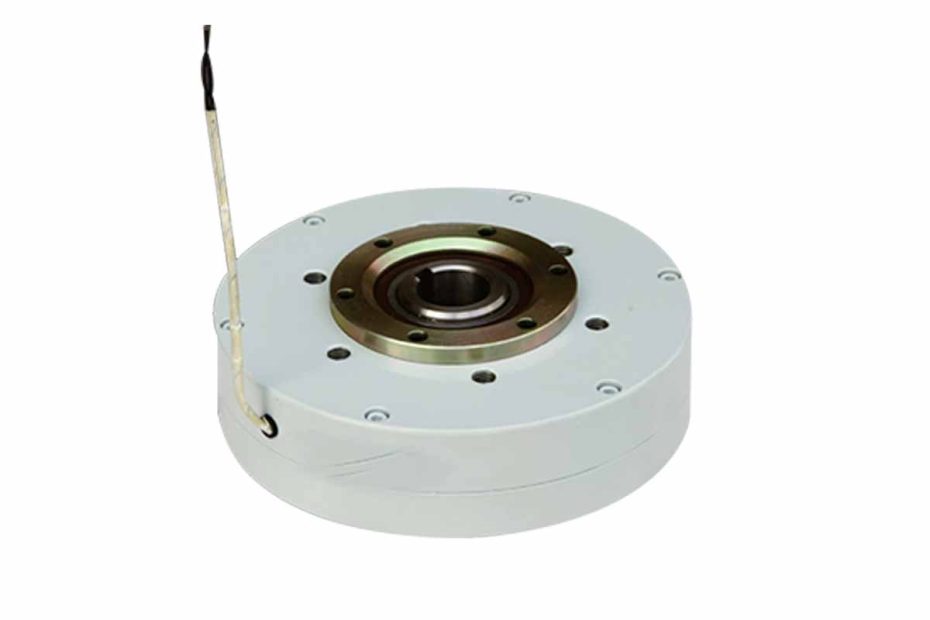Magnetic Particle Brakes (MPBs) stand as a remarkable technology in the world of mechanical engineering, providing precise control in various applications. One intriguing use case is their application in continuous slip scenarios, where controlled slippage is essential.
Magnetic Particle Brakes operate on the principle of utilizing magnetic particles within the braking system. These brakes consist of two main components: a stator and a rotor. The stator is the stationary part of the brake, while the rotor is connected to the output shaft. When an electromagnetic field is applied, it induces a shear force on the magnetic particles between the stator and rotor, creating a resistive torque.
Working Principles of Magnetic Particle Brakes
The engagement of a Magnetic Particle Brake is a dynamic process. When the electromagnetic field is energized, the magnetic particles align with the magnetic flux lines, creating a solid connection between the stator and rotor. This engagement generates a braking torque that can be precisely controlled by adjusting the current supplied to the electromagnet.
Magnetic Particle Brakes : Continuous Slip Applications
Continuous slip scenarios are common in various industrial applications, requiring controlled slippage for optimal performance. Magnetic Particle Brakes find significant use in such scenarios due to their ability to provide smooth and adjustable torque. Let’s explore some key applications where Magnetic Particle Brakes play a crucial role.
1. Tension Control Systems
In manufacturing processes involving materials like paper, film, or textiles, maintaining consistent tension is vital. Magnetic Particle Brakes are employed in tension control systems to ensure that the material moves smoothly through the production line. The ability to regulate slip allows for precise control over the tension applied to the material, preventing damage or irregularities.
2. Dynamometers for Engine Testing
In the automotive industry, dynamometers are used for testing engines and drivetrain components. Magnetic Particle Brakes serve as essential components in dynamometers, allowing controlled slippage during tests. This controlled slippage simulates real-world driving conditions, providing accurate data on the performance and durability of engines and transmissions.
Advantages of Magnetic Particle Brakes in Continuous Slip Applications
- Precise Torque Control : One of the primary advantages of Magnetic Particle Brakes in continuous slip scenarios is their ability to offer precise torque control. The electromagnetic field can be adjusted in real-time, allowing for fine-tuning of the braking torque. This level of control is crucial in applications where variations in slip are needed for optimal performance.
- Smooth and Consistent Operation :Magnetic Particle Brakes provide a smooth and consistent operation in continuous slip applications. The controlled slippage ensures that tension, speed, or torque variations are managed with precision, contributing to the overall efficiency of the system.

Case Study: Magnetic Particle Brake in a Film Processing Line
To illustrate the practical application of Magnetic Particle Brakes in a continuous slip scenario, let’s examine a case study involving a film processing line.
| Component | Function |
|---|---|
| Magnetic Particle Brake | Controls tension and provides precise torque control for the continuous slip of the film. |
| Film Material | Moves through the production line, requiring controlled slippage for proper tension. |
| Control System | Monitors and adjusts the electromagnetic field in the Magnetic Particle Brake for optimal performance. |
Future Developments in Magnetic Particle Brake Technology
As technology advances, Magnetic Particle Brake technology is likely to see further enhancements. Some potential future developments include:
- Smart Control Systems: Integration with advanced control systems using sensors and feedback mechanisms for real-time adjustments.
- Enhanced Materials: Research and development focused on improving the magnetic particles to enhance the overall performance and durability of Magnetic Particle Brakes.
Conclusion
In conclusion, Magnetic Particle Brakes prove to be invaluable in continuous slip applications, providing the precise torque control needed for optimal performance. From tension control in manufacturing processes to dynamometer testing in the automotive industry, these brakes showcase versatility and reliability. As technology continues to evolve, the future holds exciting possibilities for further improvements in Magnetic Particle Brake technology, ensuring their continued significance in the realm of mechanical engineering.
